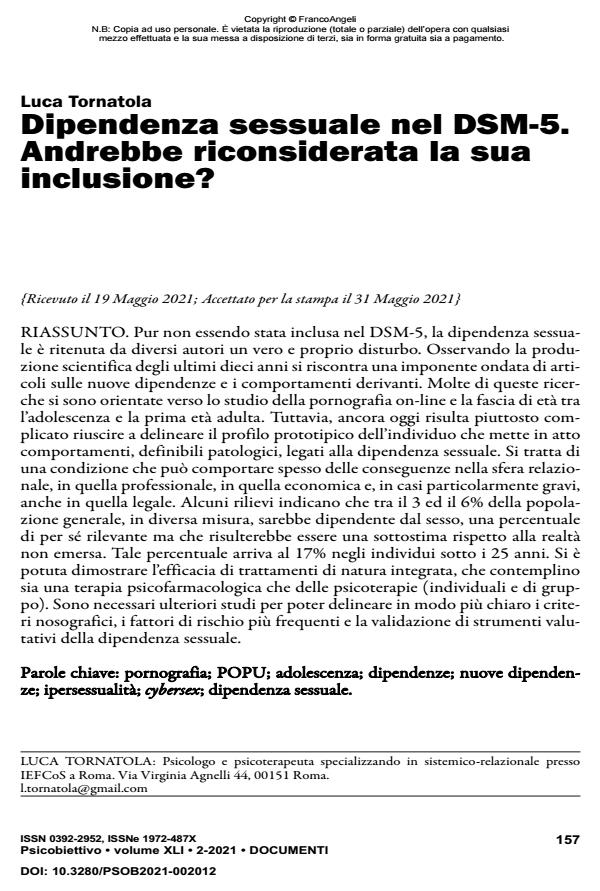Sexual addiction in the dsm-5. should its inclusion be reconsidered?
Journal title PSICOBIETTIVO
Author/s Luca Tornatola
Publishing Year 2021 Issue 2021/2
Language Italian Pages 10 P. 157-166 File size 109 KB
DOI 10.3280/PSOB2021-002012
DOI is like a bar code for intellectual property: to have more infomation
click here
Below, you can see the article first page
If you want to buy this article in PDF format, you can do it, following the instructions to buy download credits

FrancoAngeli is member of Publishers International Linking Association, Inc (PILA), a not-for-profit association which run the CrossRef service enabling links to and from online scholarly content.
Although not included in the DSM-5, sexual addiction is considered by several authors to be a real disorder. Looking at the scientific production of the last ten years, there has been a massive wave of articles on new addictions and the resulting behaviors. Much of this research has focused on the study of online pornography and on the age range between adolescence and early adulthood. However, it is still difficult to establish the prototypical profile of the individual who engages in this conduct in a pathological manner. It is a condition that can often have serious consequences in the relational, professional and economic spheres and, in severe cases, even in the legal sphere. Some findings indicate that the percentage of people among the general population who, to varying degrees, are sex addicted is between 3 and 6 per cent, which in itself is a significant figure but would be an underestimate compared with the reality that has not emerged. This percentage rises to 17% in the case of individuals under 25 years of age. It has been possible to demonstrate the effectiveness of integrated treatments, including both psychopharmacological therapy and psychotherapy (individual and group). Further studies are needed to define more clearly the nosographic criteria, the most frequent risk factors and the validation of assessment instruments for sexual addiction.
Keywords: pornography; POPU; adolescence; addictions; new addictions; hypersexuality; cybersex; sex addiction.
Luca Tornatola, Dipendenza sessuale nel DSM-5. Andrebbe riconsiderata la sua inclusione? in "PSICOBIETTIVO" 2/2021, pp 157-166, DOI: 10.3280/PSOB2021-002012